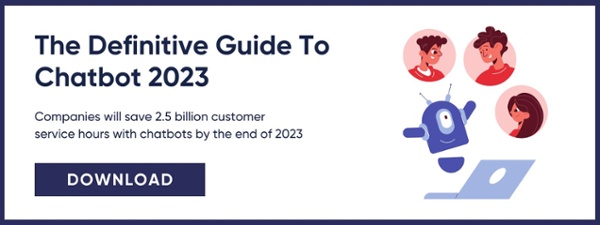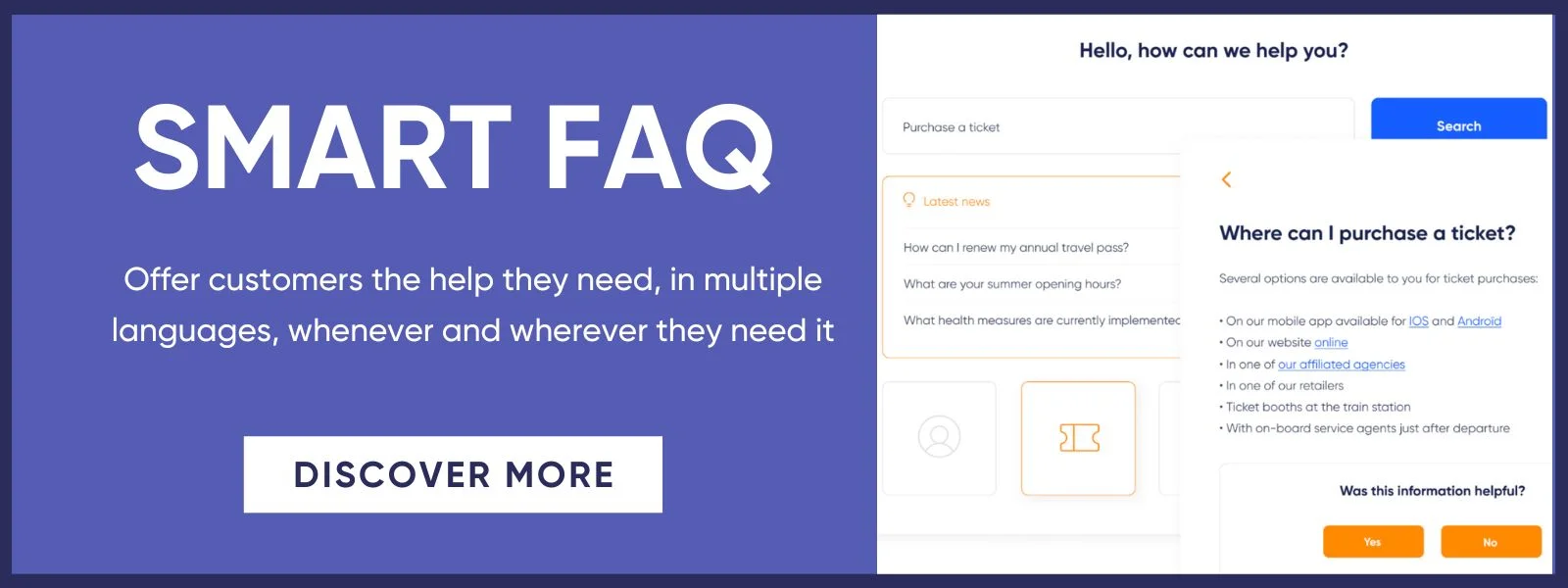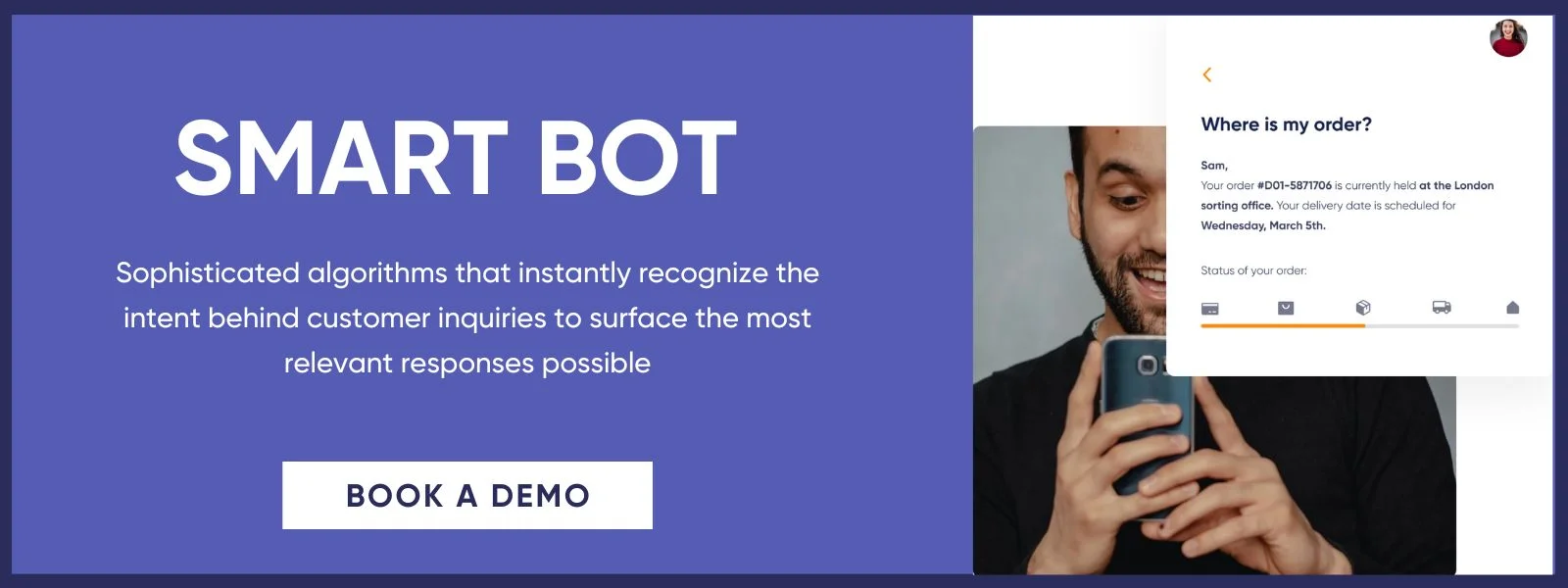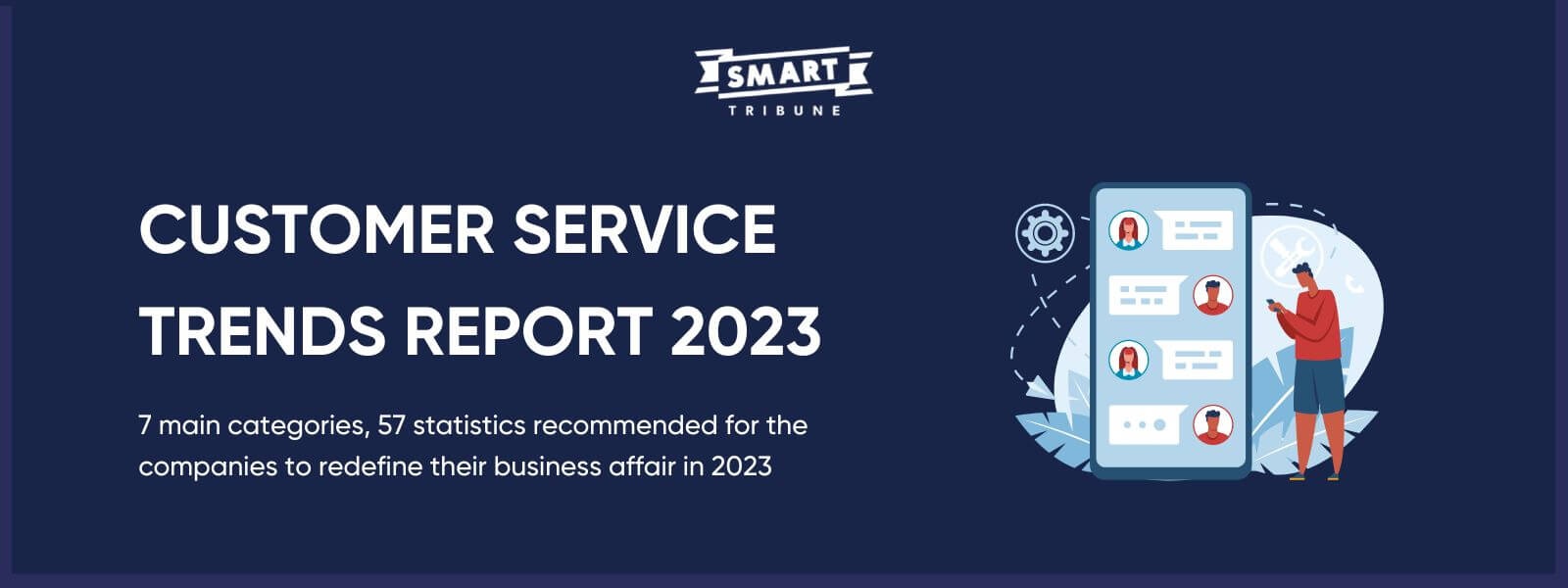
On MARCH 22, 2022
Customer Service Automation: A Guide to Scalable Customer Support
People want to access customer service on their terms. In fact, 66% of adults say that valuing their time during a customer service exchange is the most important thing for them. After all, there’s little more frustrating than wasting your entire lunch break on hold without getting your question or issue resolved. So, to ensure customer needs are being met at all times, your customer support strategy must prioritise speed and ease of access no matter how high your contact centre volume is. That's precisely where customer service automation comes in.
Table of content
- What is customer service automation?
- How does customer service automation work?
- The benefits of customer service automation
- The cons of customer service automation
- Optimising customer service with automation
- Take your customer service strategy up a notch with automation
What is customer service automation?
Customer service automation is the process of introducing various solutions, software, and technologies that can handle a large swatch of customer service interactions without requiring input or direct involvement from a living and breathing human being. In other words, these solutions make it possible for businesses to offer their customers around-the-clock support without having to hire a 24/7 team of customer service agents.
Perhaps the biggest benefit of automated customer service is that it allows your customers to answer their questions on their own and in real-time, whether they’re browsing your site during normal business hours or in the middle of the night.
That being said, humans must still play an important part in your customer service strategy. After all, should automated solutions not be able to address a customer’s question, request, or complaint to the customer’s satisfaction, they are typically smart enough—thanks to artificial intelligence (AI) and machine learning—to know when to pass the interaction onto an agent.
However, by introducing automated customer service channels into the mix, you can optimise your customer service team’s workload and allow agents to dedicate more of their time, energy, and problem-solving expertise to tackling the trickiest queries. For this reason, it has been predicted that AI usage within customer service teams will increase by 143% over the next year.
Additionally, in a survey conducted by Clutch, 88% of people said they dislike navigating long phone menus before actually getting to speak to a real person. Using other automated customer services tools—such as dynamic FAQs, smart chatbots, and in-context help widgets—can triage queries more effectively, leading to more efficient customer interactions.
Examples of automated customer service solutions
There are many different types of automated customer service solutions floating around today. Each has a different function—ranging from helping customers to navigate your website or app to capturing customer questions and escalating issues to a human agent.
Here are just some of the most common examples of automated customer service:
- Dynamic FAQs: Rather than simply managing a tried-and-true static page of FAQs—which certainly has its merits from an SEO perspective— a dynamic FAQ acts like a responsive search engine. Fueled by your knowledge base, it can surface the right suggested answers based on a customer’s search intent.
- Chatbots: Powered by AI, machine learning, and natural language process, chatbots provide live chat functions that can be programmed and taught to tackle up to 70% of simple customer inquiries on their own. This may include directing customers to online resources where they can answer their questions on their own, facilitating purchases or transactions (including things like booking travel reservations), or creating a ticket for a human agent to pick up the customer service interaction where the chatbot left off.
- Contextual help widgets: These essentially “float” around your website, virtually popping up on any page in an effort to anticipate when a customer may have a question or may need a gentle nudge (or incentive) to complete a transaction. Similar to the two solutions above, help widgets are also powered your knowledge base; the only difference here is that help widgets follow the customer throughout their journey, allowing them to get answers without ever navigating away from page they’re on.
- Interactive voice response (IVR) systems: These are automated phone-based systems that direct callers to the most appropriate agent or department based on their responses to a series of “information gathering” questions or prompts.
- Online help desk: If a customer has exhausted all customer self-service options—or simply wants to contact an agent directly for help—an online help desk makes it possible for customers to open a ticket and then await a response (within the average wait time).
How does customer service automation work?
Aside from helping customers get answers to most of their questions quickly, easily, and autonomously, one of the biggest (internal) benefits of customer service automation is its ability to help customer service teams work more efficiently by dedicating more of their time to complex customer service inquiries (versus easy-to-answer, FAQ-related questions).
Automated customer service solutions can be programmed to help customers with simple—aka, easy-to-automate—information pertaining to returns, store hours, locations, and pertinent product or service information. Further, by leveraging advanced AI to minimise contact centre volume and empower customers to be more autonomous along their journey, these solutions increase agent productivity, helping them to achieve the best results for customers.
Now, in terms of integration, not all customer service automation solutions are created equal. Some can be easily integrated into your existing CRM to give agents a one-stop-shop for accessing the pertinent brand and customer information they need to manage customer interactions effortlessly. Others may require a more in-depth tech implementation, including programming and “training” (in the case of chatbots), to ensure that they 1) work seamlessly within your website and 2) have the knowledge to answer customer questions correctly.
The long story short: If anyone tries to sell you a turn-key automated customer service solution that, purportedly, can go live immediately, it’s probably too good to be true. Automation is fueled by knowledge as well as an ability to learn and adapt to customer intent over time. Implementing any of these customer self-service solutions will need some TLC on your part.
AI usage is set to increase by 143% over the next year
— Source: Forbes
The benefits of customer service automation
There are a lot of benefits that go hand-in-hand with implementing automated customer service solutions, many of which can completely transform the overall customer experience:
1. Customers can get help on their own terms
No two customers are alike. Some prefer to hunt for information on their own—until they’ve exhausted all of their options—while others will call customer service without giving it a second thought. This is why automated customer service solutions are a great addition to your existing customer service strategy. Simply put, they give customers a choice in how they receive help.
It has actually been found that, while on their own customer service journey, 41% of people will check a brand’s website first if they have questions about products or services. Younger people are even more likely to be digital-first, with 72% of millennials saying that, for them, picking up the phone to speak to an agent is not the best way to sort out a customer service issue.
But don’t be fooled into thinking that digital natives are the only demographic who appreciate automated customer service solutions. It has also been found that 18% of the “silent generation” (people between the ages of 77 to 94) like to seek digital customer service support as well. This basically tells us that, to varying extents, people prefer taking a first pass at solving their own customer service issues before escalating their inquiry with the help of an agent.
2. Customers can get support around the clock
A YouGov survey found that just six percent of people in the UK work a standard 9-5 day—with 11.5% of people working night shifts. This transformation in how we live and work means that there’s a far greater chance today that your customers could be seeking help of some sort outside of standing business operating hours. But why incur the unnecessary additional costs of employing 24/7 staff when you can rely on customer service automation to address your customers’ needs at any hour of the day. And as mentioned before, if they can seem to help customers with a complex or non-automated task, then it’s easy for them to open a ticket so that a customer service agent can pick up to resolve the customer’s issue quickly.
3. Customers get access to more consistent and reliable information
As we all know, the only constant in life is change. This includes the information you provide to customers during customer service interactions. Policies may change, prices may change, operating hours may change—you get the point. But because we are all only human, sometimes those changes don’t make it to each and every agent. This means that the customer experience, including the information they receive during customer service interaction, can vary widely—and sometimes even lead to a negative customer experience.
However, with automated customer service solutions, all you have to do is update the knowledge base with the most up-to-date information once, and it will take hold across the board immediately. Obviously, the big benefit here is that it ensures the right answers to simple, FAQ-oriented information is passed back to customers at all times. Even better, this information can fortify your internal knowledge base as well to ensure that agents have access to the same information to use in their customer conversations.

4. Customers can help make your automated customer service better
Every time your customers interact with automated customer service solutions is an opportunity to feed those solutions with insights—based on customer behaviour on your website—that can help them make their answers better over time.
For example, within a dynamic FAQ, you can prompt customers to tell you if an answer was helpful or not. Companies that love taking action on customer feedback to improve the customer experience may want to follow up on a negative response (to the question above) by asking customers to provide more input about what would have made the response better.
Additionally, because these solutions are digital, they help provide insight into where customers are running into the most problems that lead them to bounce off of your website. You might, for instance, notice that customers often use a contextual help widget on a specific product page but still don’t follow through on a transaction. That can potentially tell you that the content on the page isn’t optimised for customer needs or that critical information is missing.
Finally, based on how your customers interact with these automated customer service solutions, if you’ve connected everything into a central CRM tool, you’ll be able to paint a clearer picture of your customers and, as a result, be able to anticipate their needs better.
5. Businesses can keep costs down
Automated customer service doesn’t just benefit your customers. It can also save your business between 20-40% on customer service costs—while simultaneously increasing customer satisfaction and boosting conversion rates by up to 20%. And because this gives you an opportunity to provide proactive customer service, one that can be more easily tailored to each customer’s journey on your site, it helps you create a better customer experience overall. But again, this doesn’t mean that humans are slowly being phased out. Quite to the contrary, by reducing unnecessary customer service costs, whether for staffing or hardware needs, you can be smarter about how you invest in the right solutions and the right agents.
6. Customer service agents can be more productive and efficient
As you would imagine, the number one goal for any customer service team is to resolve customer questions, issues, or complaints as quickly as possible while also ensuring the customer is ultimately happy with the end result. However, sometimes it’s hard to do that when many contact centres measure productivity in terms of metrics like first contact resolution (FCR), average handle time (AHT), and call length. Because agents are oftentimes under pressure to resolve customer inquiries as quickly as possible, they may inadvertently rush through calls to keep their numbers down.
But we all know that that’s not the right approach to customer service. Sure, resolving a customer’s inquiry quickly is key; however, it should never come at the risk of a negative customer service experience. That’s why customer service automation can be a great way to balance the work that living and breathing agents do.
For obvious reasons, automated customer service solutions can provide customers with answers within a matter of seconds. So these solutions can work effectively to bring those “metrics” down, while human agents can spend time and energy tackling complex issues that require more of their focused attention. In other words, by removing massive call volume out of the equation, you create space for agents to be customer experience enhancers.
Automation can reduce customer service costs by up to 40%.
— Source: Nextiva
The cons of customer service automation
Although we are certainly big supporters of customer self-service solutions, it would not be fair for us to overlook what we’ve been told are the disadvantages of customer service automation:
1. Customer service automation lacks a human touch
True, AI has made automated customer service tools smarter and more intuitive than ever before. But they still lack the emotional intelligence of real people, which can make or break the customer experience when a customer reaches out to get help on a complex issue. While many solutions can be programmed to speak in the voice and tone of your brand, they will always be focused on finding the right answers to customer questions versus leading with empathy. This is why real human agents will always be a part of the customer service dynamic: There are far too many instances when speaking to an actual person—who’s actively listening to a customer’s issue—can make all the difference.
2. Customer service automation has certain limitations
AI has made it possible for automated customer service solutions to tackle a number of different tasks or transactions that once required human interaction—all in a fraction of the time. For example, you can book hair appointments, purchase airline tickets, open a bank account, apply for insurance, and even virtually diagnose eye disease (with an accuracy rate just six percent less than doctors with decades of training).
Of course, if any of these tasks take a complex turn, the automated solutions will know when to pass the baton. This is because AI hasn’t yet reached the stage of AGI (artificial general intelligence), where it can understand and carry out any task a human can. As mentioned above, for instances where an agent’s discretion, sensitivity, or empathy is required, an automated customer service tool will still struggle to strike the right tone.
3. Customer service automation is replacing humans
Everyone likes to talk about technology replacing the jobs of other humans. Of course, in some cases, that might be very well true. However, in the realm of customer service, humans will always play an important role. Why? Because customer service is, more or less, all about creating positive human interactions—or, more simply, about humans helping humans.
But it’s also pretty clear that agents shouldn’t be wasting their time fielding questions about return policies, store hours, shipping details, and other information that can be easily answered in an automated way through various customer self-service solutions. That’s simply not a good use of an agent’s time or expertise. This is precisely why a customer service strategy today should be the seamless interweaving of human and artificial intelligence.
Now, one thing that we often forget is that technology—AI included—is not perfect either. In fact, one of the biggest issues that AI still faces is ‘catastrophic forgetting’, where a system loses some or all of its original “muscle memory” for completing specific tasks, thereby requiring the system to re-learn from scratch all over again. This, certainly, is not an issue with human agents.
4. Customer service automation leads to poor customer interactions
You’re probably seeing a trend here, but the perennial fear is that if technology takes over, that all-important human element suddenly disappears. But that doesn’t have to be the case either. Automated customer service solutions can be trained to speak in the voice and tone of your brand as well as understand the nuances in a customer’s tone (based on the inputs they provide) to respond in a more friendly and helpful way. When done right, even these automated solutions can lead to strong customer interactions because if they are able to resolve customer issues quickly while also creating a positive customer experience, then it’s a win-win for all.
At the end of the day, customer service is all about helping people work through their questions, concerns, issues, or complaints in a way that boosts a customer’s happiness and satisfaction with a brand. Therefore, the same thought that goes into training your human agents must carry over into how you program your automated solutions. Every customer interaction matters just as much as every touchpoint along the customer service journey must be consistent—both in terms of quality and relatability.

Optimising customer service with automation
As is the case with implementing any new tech solution, automated customer service systems can come with their own set of teething problems that your organisation will have to adapt to.
To get the best results out of any customer service automation you implement, work with a tech partner (ahem, like our customer service experts at Smart Tribune) who understands the ins and outs of how tech can be used to amplify and improve the customer service experience.
By taking the time to optimise your automated customer service solutions correctly—essentially weaving them into your broader customer service strategy—you begin to connect the dots that enable those solutions to augment your existing strategies in a way that increases customer satisfaction, customer loyalty, and customer happiness. In other words, these solutions shouldn’t just be seen as “solutions” in the simplest terms. They are just as much of an extension of your service strategy as they are a part of the end-to-end customer experience.
In this way, they can’t simply be seen as air cover when agents go home for the day. Quite to the contrary, they need to be positioned within your business as a customer service team’s partner in crime because, in many ways, they scale and amplify the work a human team can do.
Remember, when first optimising your automated customer service solutions, you must ask yourself the following: 1) What questions do customers ask about most or what issues do they have most often, and 2) what information exists that can be automated easily? This will help you identify your “low hanging fruit” to deploy and test these solutions as fast as possible.
Long story short: Once you understand how to get the most out of your automated customer service solutions, you’ll find it easier to satisfy customer needs without exhausting your human resources. In fact, because they’ll have less repetitive, high-volume work to deal with, they’ll become more effective at everything they do—including leading positive customer interactions.
Not to mention, this will also give your team a little more space to grow, making it possible for you to invest more time and resources—probably those that would have gone into hiring your 24/7 team—towards regularly upskilling your agents and providing them with a foundation for career growth and satisfaction. After all, we know that when employees are happy, they’ll almost naturally create better customer experiences that drive greater business value.
Automating customer service is absolutely critical
It’s no secret that customers today are more demanding and impatient than ever. If they can’t get an answer or solve an issue in a matter of clicks, it can become a complete meltdown. It’s actually been found that 46% of customers expect a company's first response time to be below four hours, with another 12% expecting some kind of response in less than 15 minutes. Even so, the average company’s customer service team today takes about 12 hours to respond to customer inquiries—while there are some that leave customers hanging for days on end.
Knowing that customer expectations are higher than ever and that customers are willing to explore all customer service channels to get the information they need, there is no longer any reason for automated customer service solutions to not be a part of the equation. They are the perfect addition for optimising your customer service experience in a way that makes your customers feel as though they’re in control of their own information-seeking journey.
Conversational AI is changing the chatbot game
We’d be remiss if we talked about all of this automation without saying a quick word about conversational AI. In short, conversational AI is what makes it possible for chatbots to communicate with customers in the same way a human agent may conduct a live chat. It pulls on tons of data, machine learning, and natural language processing to learn how to pick up on the nuances of human conversation over time.
In the same vein, it’s what allows chatbots to learn how to respond to customer questions or address customer issues more effectively. As time goes on, and the chatbot processes more information from its interactions, it gains a better understanding of customer behaviour and, thus, is able to translate those learnings into a more effective experience.
Machine learning is what helps AI-powered chatbots recognise patterns and adapt responses to those patterns accordingly. Over time, chatbots can become more efficient and also offer personable and personalised service, which both improves customer relations and can lead to significant cost savings across your entire customer service ecosystem.
“Time is a ‘make or break’ factor for your customer support strategies. The quicker you respond, the better.”
— Source: Chatbotsjournal.com
Take your customer service strategy up a notch with automation
If you’ve kept on reading up to this point, it’s pretty clear that customer service automation is transforming customer service in ways that are both good for customers and businesses.
For customers, it’s all about helping them get whatever information they need as quickly as possible—preferably without ever having to reach out to customer service for extra help. For businesses, it’s about optimising resources to create better customer experiences across the board while also improving the productivity, efficiency, and general happiness of customer service teams. And when those two pieces come together, businesses grow in meaningful ways—because happier customers are return customers who become loyal customers. That level of customer satisfaction is the key to sustained business growth.
That being said, there’s no one-size-fits-all to any automation solution—nor should there be because every business is a little different. But by working with the team at Smart Tribune, we can help you chart your unique path into the world of customer service automation. Go ahead and schedule a demo today to get the conversation started.
To learn more about the ins and outs of chatbots, check out our Definitive Guide to Chatbots.







.png)



